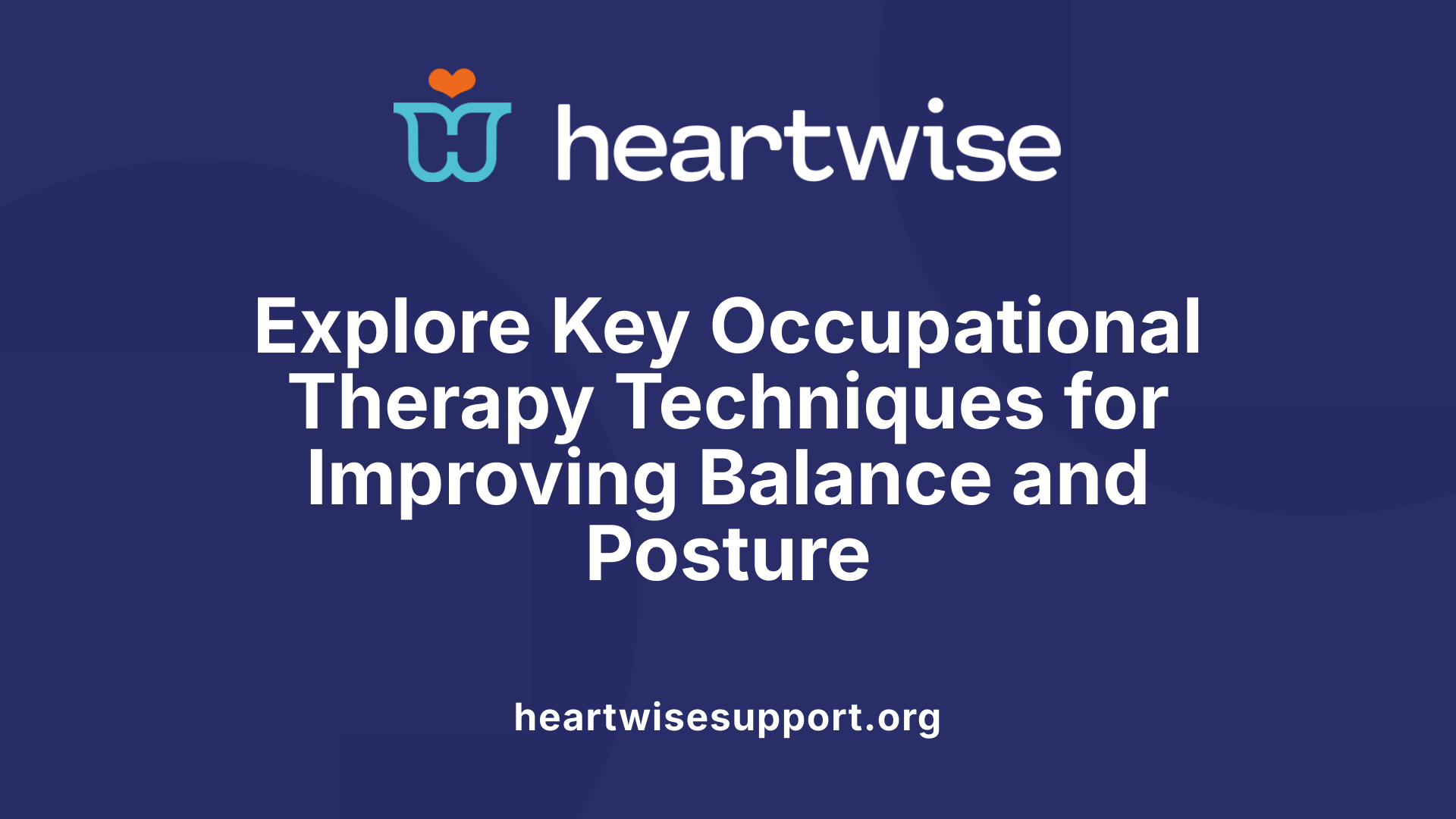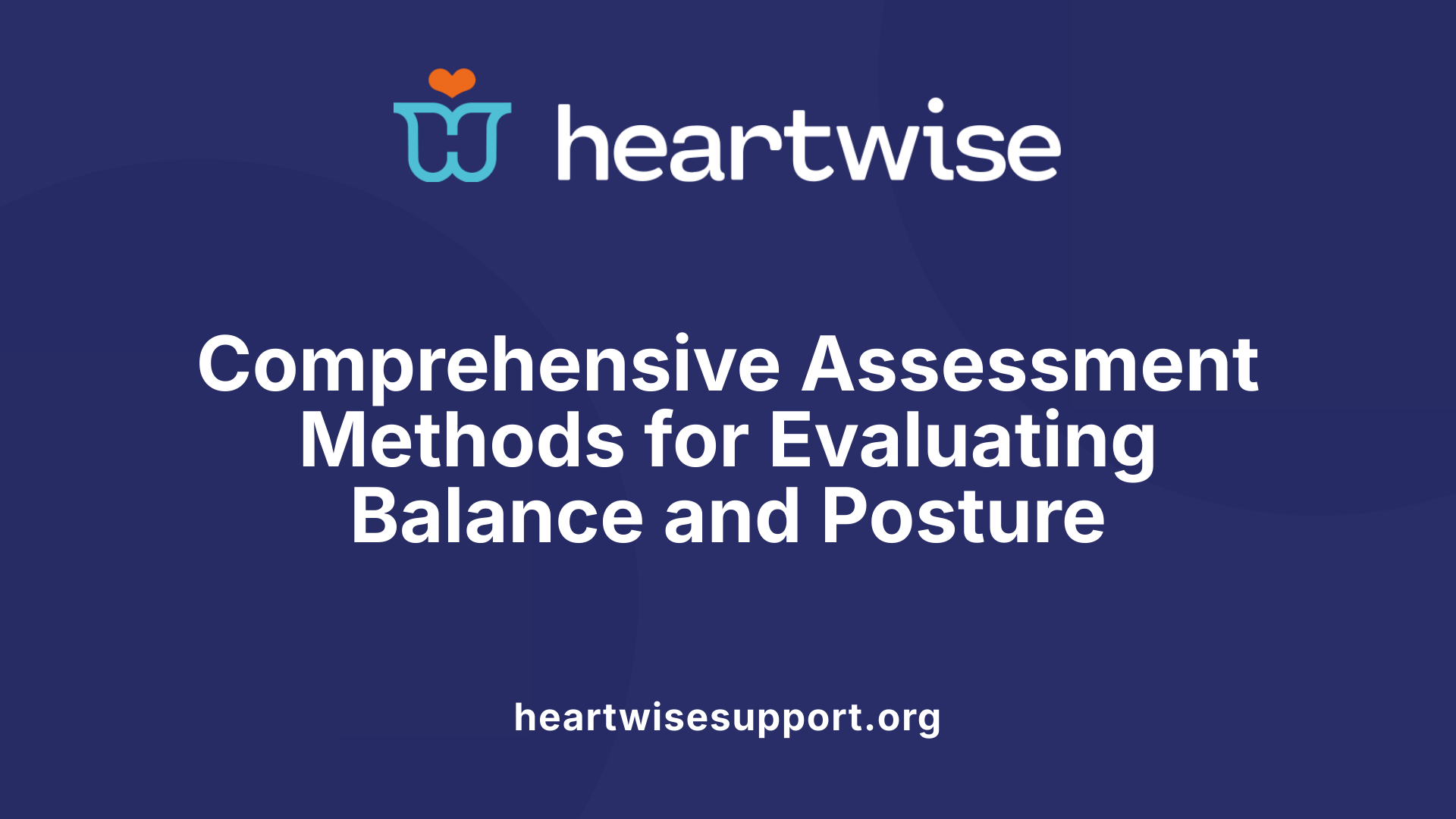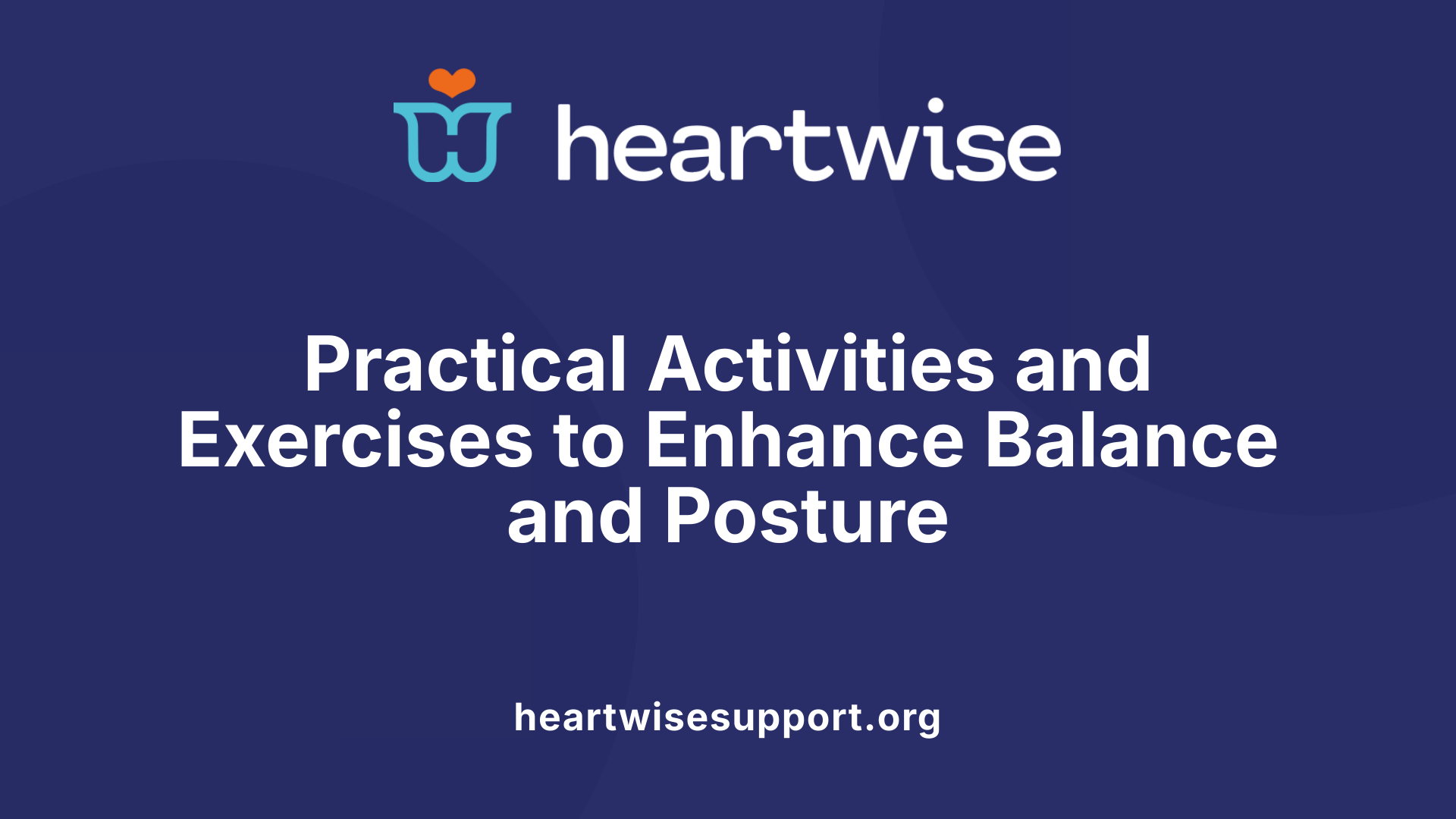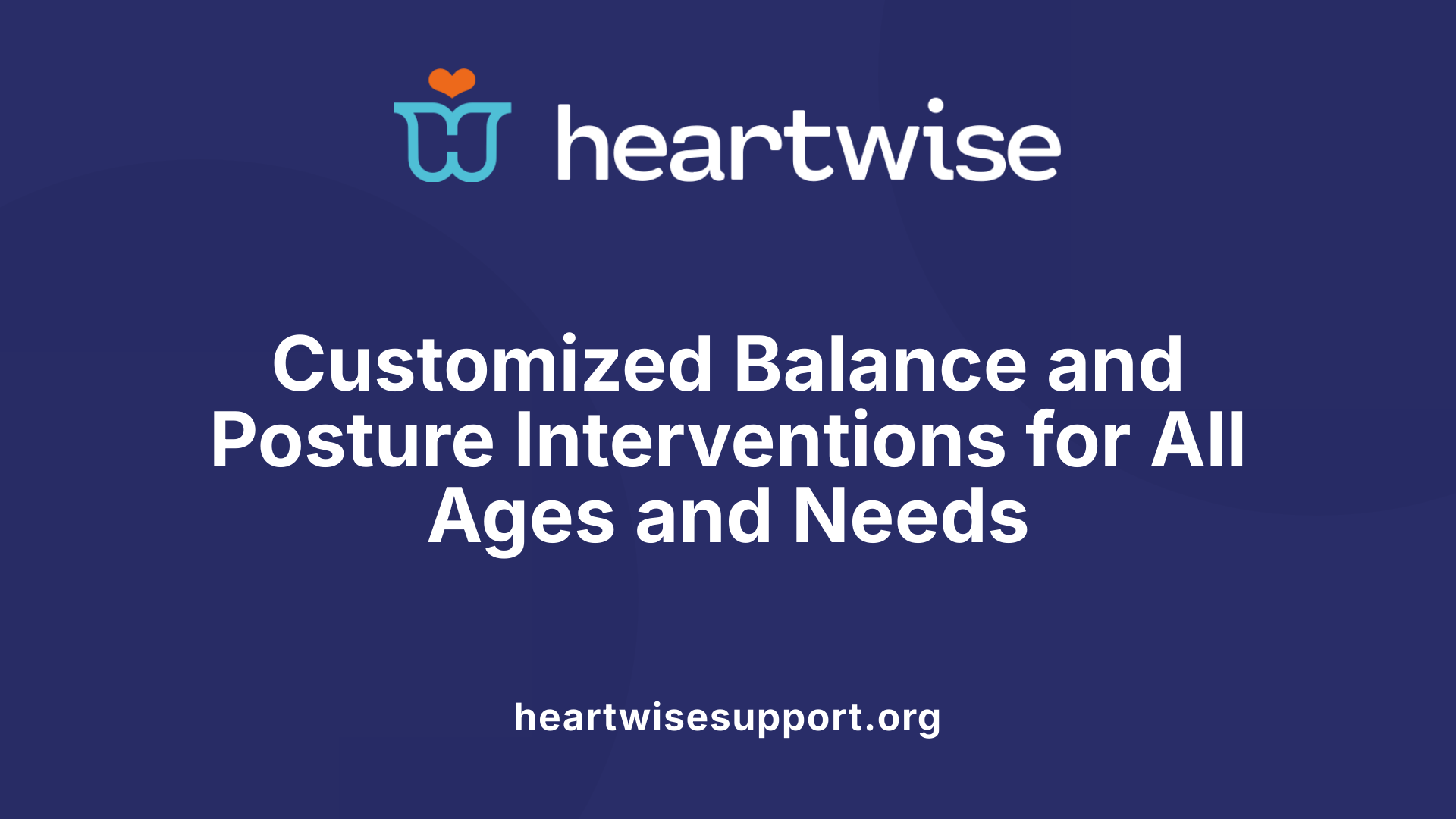Introduction to Occupational Therapy for Balance and Posture
Occupational therapy (OT) plays a vital role in enhancing postural alignment and balance, contributing to safer mobility, independence, and improved quality of life. By integrating a variety of techniques tailored to individual needs, OT addresses both physical and sensory aspects of postural control, benefiting diverse populations including seniors, children, and those with rehabilitation needs.
Primary Techniques in Occupational Therapy for Balance and Posture
 Occupational therapy applies several effective methods to help improve balance and posture, especially in seniors and individuals with neuromuscular challenges. Central to these strategies are postural control activities, core strengthening exercises, sensory integration techniques, balance training methods, use of adaptive equipment, and activity modifications coupled with education.
Occupational therapy applies several effective methods to help improve balance and posture, especially in seniors and individuals with neuromuscular challenges. Central to these strategies are postural control activities, core strengthening exercises, sensory integration techniques, balance training methods, use of adaptive equipment, and activity modifications coupled with education.
Postural control activities include exercises designed to realign the body's center of gravity, enhance coordination, and foster stability. These often involve practicing proper body positioning, as well as experiencing controlled movements that challenge maintaining equilibrium.
Core strength forms the foundation of good posture. Therapies utilize activities like planks, bridges, and rotational movements to build abdominal, back, and pelvic muscles, which support trunk stability. Strengthening these muscles reduces strain and improves balance during daily tasks.
Sensory integration techniques train the brain to interpret sensory signals—vision, touch, proprioception—more effectively. This can be particularly beneficial for conditions like Parkinson's disease or after strokes, helping individuals improve their spatial awareness and reactions to environmental stimuli.
Balance training methods vary to suit individual abilities and include static exercises such as heel-to-toe stands and single-leg stands, as well as dynamic tasks like weight shifting, stepping over obstacles, and functional activities such as reaching or climbing stairs. These exercises enhance both static and dynamic stability, crucial for fall prevention.
Incorporating adaptive equipment is another vital component. Items like supportive walkers, grab bars, non-slip mats, and specialized footwear provide stability and safety during everyday movements. Proper use and training with these devices can significantly reduce fall risks.
Finally, activity modifications and educational interventions empower individuals to perform daily routines safely. This includes ergonomic adjustments, pacing strategies, and teaching safe body mechanics during activities like dressing, grooming, cooking, and recreational pursuits.
Together, these techniques form a comprehensive approach within occupational therapy, focusing on real-life applications to help individuals maintain independence, improve confidence, and reduce fall risks.
Assessment Approaches for Evaluating Balance and Postural Control

How does occupational therapy assess balance and postural control?
Occupational therapy (OT) adopts a comprehensive approach to evaluate an individual’s balance and postural control, combining observational analysis, standardized tests, and advanced quantitative methods.
Therapists often observe clients performing everyday activities and specific balance-related tasks. These observations help identify issues with biomechanics, coordination, and movement strategies. To measure specific components, tools like the Berg Balance Scale and the timed up-and-go test are frequently used. These assessments gauge static and dynamic balance, functional mobility, and confidence in performing daily activities.
Standardized assessments also include tests such as the Romberg and Single Limb Stance, which evaluate sensory integration and static balance under controlled conditions. These tests are valuable for identifying impairments related to proprioception and vestibular function.
In recent years, more sophisticated techniques have been introduced. Deep-learning algorithms, such as MediaPipe Pose, utilize video analysis to objectively quantify postural sway, stability, and movement patterns. These tools provide detailed data on postural control that surpass traditional observational methods.
Assessment of sensory, motor, and central processing contributions is crucial. For example, evaluating visual, somatosensory, and vestibular input helps determine the underlying causes of balance deficits. Patients with neurological conditions like stroke or neurodegenerative diseases benefit the most from a multidisciplinary evaluation approach.
While current assessments provide valuable insights, they often do not fully account for reactive postural responses or cognitive influences on balance. This gap highlights the need for incorporating both reactive movement tests and cognitive assessments into routine evaluations.
Overall, a holistic, multi-method assessment ensures that interventions are precisely targeted to address specific impairments. Effective evaluation guides intervention planning to improve stability, prevent falls, and enhance independence in daily living.
| Assessment Type | Methodology | Focus Areas | Additional Notes |
|---|---|---|---|
| Observational analysis | Therapist observations during tasks | Movement strategies, posture | Identifies compensatory patterns |
| Standardized tools | Berg Balance, TUG, Romberg tests | Static/dynamic balance, mobility | Widely used, quick to administer |
| Impairment level tests | Single Limb Stance, sensory tests | Sensory integration, proprioception | Diagnostic for sensorimotor deficits |
| Advanced quantitative methods | Video analysis, deep learning algorithms | Postural sway, stability metrics | Objective, detailed data collection |
Choosing appropriate assessments depends on the client’s condition, and combining multiple methods yields a thorough understanding of balance and postural control, ultimately supporting targeted therapy strategies.
Practical Exercises in Occupational Therapy for Balance and Posture
 Occupational therapy offers a variety of practical exercises designed to improve balance and posture across different settings and capabilities. These activities can address both static and dynamic stability, helping individuals perform daily tasks safely and confidently.
Occupational therapy offers a variety of practical exercises designed to improve balance and posture across different settings and capabilities. These activities can address both static and dynamic stability, helping individuals perform daily tasks safely and confidently.
For dynamic reaching and transfer activities, patients may practice reaching in various directions while seated or standing, which enhances coordination and arm-leg balance. Tasks such as safely getting in and out of the shower, transferring from a bed to a wheelchair, or moving between different positions are integrated into therapy to promote functional stability.
Standing and seated balance exercises form a core component of intervention strategies. Standalone exercises like heel-to-toe walking along a line or sideways stepping challenge static and dynamic balance, often with support from a wall or sturdy furniture to prevent falls. Sitting activities, including reaching for objects, seated marching, or balancing on one foot while seated, help strengthen postural control during everyday tasks.
Functional task practice plays a crucial role. These include practicing stair navigation, grooming routines at the sink, or making the bed, focusing on maintaining stability through real-life movements. Such practice enhances confidence and promotes independence.
Recreational and playful activities serve as enjoyable ways to challenge balance. Chair yoga, gardening simulations, seated balloon volleyball, and interactive games not only build core strength but also make therapy engaging, encouraging consistency and participation.
Support and assistive devices are often incorporated into exercises to enhance safety and stability. Using walkers, canes, or grab bars during exercises helps clients learn correct technique and ensures safe practice. Training on the proper use of these aids during exercises translates into better support during daily activities.
Progression and safety tips are vital. Exercises are tailored to individual mobility levels, beginning with simpler tasks and gradually increasing complexity. Safety measures include performing exercises near a support surface, starting with short durations, and ensuring supervision during challenging activities to prevent falls.
Incorporating these practical exercises into occupational therapy programs can significantly enhance confidence, muscular strength, and balance, which are essential for maintaining independence and reducing fall risks.
Tailored Interventions for Diverse Populations

How can occupational therapy interventions benefit different populations, such as seniors and children, in improving balance and posture?
Occupational therapy (OT) offers customized strategies that address the unique needs of various groups, including seniors, children, and people with neuromuscular conditions. These interventions aim to enhance balance, posture, and functional independence, ultimately promoting safety and confidence in daily activities.
For older adults, OT focuses on fall prevention by improving static and dynamic balance through specific exercises, postural training, sensory integration, and environmental modifications. Using adaptive equipment like grab bars, non-slip mats, and supportive footwear helps stabilize balance during routine tasks such as walking, dressing, or grooming. Therapists may incorporate functional mobility exercises, like rising from a chair or climbing stairs, to build confidence and reduce fall risk.
Children and individuals with developmental or motor challenges benefit from interventions that improve postural control through playful activities and functional tasks. Activities like reaching, balloon volleyball, or mirror feedback aim to strengthen core muscles, enhance coordination, and foster movement confidence. Progression through a structured pyramid of balance—from static sitting to dynamic standing tasks—supports optimal trunk control and overall stability.
These tailored approaches not only mitigate safety risks but also promote active participation in personal and social activities. By combining core strengthening, sensory feedback, and adaptive strategies, occupational therapy helps diverse populations achieve better posture and balance, leading to improved quality of life and independence.
| Population Group | Intervention Focus | Techniques and Activities | Support Tools & Modifications |
|---|---|---|---|
| Seniors | Fall prevention, mobility, independence | Balance exercises, sensory retraining, postural drills | Grab bars, non-slip mats, supportive footwear |
| Children | Motor development, core strength, coordination | Playful exercises, functional tasks, visual feedback | Toys, mirrors, tactile cues |
| Neuromuscular conditions | Postural stability, coordination, safety | Customized exercises, adaptive equipment | Support braces, mobility aids |
| General Adults | Functional balance, confidence, postural habits | Task-specific training, environmental adaptations | Support aids, ergonomic setups |
In summary, occupational therapy provides effective, age-appropriate strategies that improve balance and posture across diverse populations. These programs foster safety, independence, and active engagement, ultimately enhancing overall well-being.
Education and Evidence-Based Practice in Occupational Therapy

Why is education on posture and balance important in occupational therapy?
Understanding and maintaining proper posture and balance are fundamental to safe and effective movement during daily activities. Occupational therapy emphasizes teaching clients about maintaining proper alignment, which reduces strain on muscles and joints, minimizes pain, and prevents injuries. For example, therapists educate individuals on how to lower their center of gravity, widen their base of support, and focus on focal points to improve stability both while sitting and standing.
This educational approach supports the development of better balance and coordination skills. These skills are vital for executing everyday tasks safely, whether it's grooming, cooking, or navigating uneven surfaces. Especially for older adults or individuals with neurological conditions like Parkinson’s disease, such knowledge can significantly reduce the risk of falls, promoting independence and confidence.
Assessment of posture and balance forms the foundation for targeted intervention. Through detailed evaluation, therapists identify postural deviations or weaknesses and then prescribe specific exercises or environmental modifications. These include strength training, ergonomic adjustments, adaptive tools such as grab bars or supportive footwear, and balance exercises tailored to individual needs.
Educating clients about stable postural strategies empowers them to incorporate safe movement practices into their routines. Ultimately, this leads to improved participation in daily activities, enhanced safety, and a better quality of life. By fostering understanding and awareness, occupational therapy helps clients maintain mobility, prevent falls, and sustain their independence well into later years.
Scientific Evidence Supporting OT for Balance and Posture
Recent research and systematic reviews strongly support the effectiveness of occupational therapy (OT) methods in enhancing balance and posture, especially among seniors and individuals with neuromuscular conditions. Studies have demonstrated that targeted exercises, such as postural correction routines and core strengthening, can lead to notable reductions in musculoskeletal pain and improvements in postural control. These interventions not only assist in maintaining a healthy musculoskeletal alignment but also boost stability during daily activities.
Moreover, comprehensive posture management strategies—integrating supportive equipment, environmental modifications, and individualized therapy programs—have proven successful in preventing postural deformities and secondary health issues. For example, pecialist programs incorporating perturbation-based balance training (PBT) have been particularly effective. PBT challenges the body's reactive responses to slips and trips, significantly improving dynamic stability.
Systematic reviews have reported that PBT and similar interventions can decrease fall risk by nearly half in high-risk populations, such as older adults and stroke survivors. These findings underscore the importance of combining physical exercises, sensory integration techniques, and tailored balance training in occupational therapy.
Overall, the scientific evidence underscores that a multifaceted and personalized approach—using innovative techniques and integrating technology—creates a strong foundation for improving postural habits, reducing falls, and enhancing functional independence in diverse populations.
Conclusion: Advancing Postural Control through Occupational Therapy
Occupational therapy offers a comprehensive and evidence-based approach to enhancing balance and posture. Through targeted exercises, assessments, environmental modifications, and client education, OT professionals can significantly improve clients’ stability, safety, and functional independence. Continuous research supports the efficacy of these interventions, emphasizing their role in fall prevention and quality of life enhancement across diverse populations. Harnessing these strategies ensures a holistic pathway toward better posture, dynamic balance, and overall well-being.
References
- 5 Types of Occupational Therapy Interventions for Balance
- 5 Types of Occupational Therapy Interventions for Balance
- Dynamic Balance Exercises in Occupational Therapy - Rehab United
- Balance Physical Therapy Exercises for Improved Function
- Balance and Stability for Occupational Therapy
- Occupational Therapy for Postural Instability - The OT Centre
- Occupation-Based Balance Interventions For Your OT Practice
- Can the exercise-based and occupational therapy improve the ...
- Improving Postural Control Through Physical and Occupational ...
- Balance exercises - NHS











